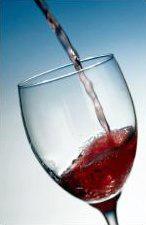The good life: the tyranny of terroir
A master of wine tells how to choose wine without fear of labels

Master of Wine Sandy Block, who earned that title after an exhaustive four-day exam that ranged from blind taste-testing to critical essays about the wine trade, can tell you what a wine is — from the soil where its grapes were harvested to the environmental influences that accent its taste — but he won’t tell you whether the wine is any good. That verdict is up to you.
“The true test of a wine has to be how delicious it is,” says Block, a senior lecturer at Boston University’s Metropolitan College and the host of a recent wine-tasting that was part of the MET conference Place, Taste, and Sustenance. “And people’s tastes vary. So much of our reaction to wine is emotional.”
Which means our tasting of wine is easily influenced by external factors. “If you tell someone a bottle cost $100,” says Block, “they may end up feeling they have bad taste if they don’t like the wine. But price is no guarantee of good wine.”
And neither is the vineyard of origin, despite the emphasis many people place on ‘terroir’ wines.
The mystique of terroir
“The concept of terroir,” says Block, “is perhaps the most misunderstood in the wine industry. The word itself is hard to translate, and there are many conflicts about what we mean by terroir. It has to do with what you might call the taste of the earth, the unique, distinctive flavor of a particular vineyard.”
He says the idea of terroir is often used in an “ideological or commercial way.” The mystique of terroir is that land has its own identity, which the winemaker should stand back and let come through. This mystique is most prominent in Europe, where, Block points out, at least three languages — French, Spanish, and Italian — do not even have a word for winemaker. In Block’s estimation, the proponents of terroir give too much credit to the land and too little to the people who make the wine.
Why does it matter? Because, says Block, terroir wines come mainly from old European vineyards and putting too much faith in the concept can lead to dismissing many good wines from the New World. He thinks that writing off New World wines is almost as foolish as dismissing blended wines, which is another consequence of devotion to terroir, according to Block.
“Blending often creates wonderful wines,” he says. “Also, champagnes are often blended, as are many great ports. If terroir is the standard, then blending is inferior. To me, that’s clearly not true.”
Ultimately, Block says, promoting the unique virtues of particular vineyards can become “the propaganda of avarice.”
On the other hand
While Block is not necessarily impressed by terroir wines, he does see a value in distinctive wines that come from grape-growing practices respectful of the vineyard as a particular site. This can be organic wine-making or — a step beyond organic — biodynamic vineyards.
Biodynamic winegrowers take an almost mystical view of the process of growing grapes and making wine. Such a winemaker might keep a particular herd of cattle, fed on a particular diet, to provide a particular manure for fertilizer. Phases of the moon are followed, and certainly nothing artificial is allowed into the growing or harvesting process. “Biodynamic vineyards follow very specific and controlled practices,” says Block, “to bring the vine in harmony with the earth.”
He suggests that skeptical wine lovers test the validity of biodynamic growing with two biodynamic wines: Clos de la Bergerie, Savennieres — Roche-Au-Moines, 2002 (about $35) and Domaine Zind Humbrecht, Gewurztraminer, 2004 (about $20). The first is actually a terroir, indicated by the word ‘clos’ in its name, which means it comes from an ancient walled-in vineyard, but it is the biodynamic practices of the vineyard that make it special.
Don’t be intimidated by vineyard labels
The overall lesson, Block hopes, is that we shouldn’t be taken in by a wine marketing itself on the basis of a particular vineyard, whether Old World or New World. For believers in terroir, he says, “wine is a pure manifestation of the soil. But once you look at wine as a human creation, it opens up the playing field from the closed terroir system. And what most people are looking for is something that tastes good.”
To find out more about the principles behind biodynamic vineyards, click here.